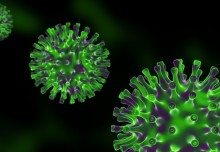

New air quality displays have been placed in London neighbourhoods as part of the launch of the AWAIR project, supported by Impact on Urban Health.
The project, run by the Environmental Research Group, aims to raise public awareness of air quality in London through the piloting of co-designed, solar-powered outdoor displays that communicate local air quality conditions.
The displays, developed in partnership with residents in three London Boroughs, present both current air quality levels and the pollution forecast for tomorrow. The devices utilise a high-resolution real-time air quality model which is continuously updated using London’s network of monitors run by Imperial.
The displays also feature a new colour scale created by researchers to indicate whether current air quality meets or exceeds WHO thresholds.
The displays are being piloted in Gipsy Hill, Peckham and White City - locations with intersecting inequalities including health conditions related to pollution exposure and digital exclusion. Co-design workshops facilitated by The Social Innovation Partnership (TSIP) were held in each of the neighbourhoods in February allowing residents to share their perceptions of local air quality, contribute design ideas and help choose locations for rollout.

The project includes a pre and post-deployment survey allowing residents an opportunity to feedback on the displays and allowing researchers to understand what effect the devices have had on the public’s perception of air quality each neighbourhood. The pilot is starting with up to 20 devices in each area with the ambition to scale beyond this if the concept proves successful.
Andrew Grieve, the principal investigator from the Environmental Research Group, said: “Air pollution affects all of us, but because it is invisible it can be hard to know if some days are worse than others. Inspired by something Rosamund Kissi-Debrah said in December 2020, I wanted to make something which could show current and forecast air quality levels to the public in the street, so everyone has equal access to this information. I’m incredibly proud of the team which helped make this idea a reality and to the residents in Gipsy Hill, Peckham and White City who have supported this project with their energy and enthusiasm. I hope these are the first of many.”
The devices will remain in place until at least December 2024 when the study team will assess engagement and interaction with the devices through surveys and focus groups in the coming months.
Deputy Leader Cllr Rezina Chowdhury, cabinet member for Sustainable Lambeth and Clean Air, said: “Lambeth Council is committed to improving air quality in our borough because the high levels of pollution we experience harm the health of many local people, particularly children and older people. We have projects in place across the borough to address these issues, and this air quality display panel will support that work by sharing information with our residents about the pollution risk they face in an accessible and useful way. I’d encourage local people to share their views on this project during the trial.”
Residents are encouraged to participate in determining the remaining device locations and to engage with the displays to better understand their local air quality. Residents are also invited to share feedback about the displays on the AWAIR website.
For more information about the AWAIR project, please visit awair-project.org website or contact erg-enquiries@imperial.ac.uk
Article text (excluding photos or graphics) © Imperial College London.
Photos and graphics subject to third party copyright used with permission or © Imperial College London.
Reporter
Jack Stewart
School of Public Health

Contact details
Tel: +44 (0)20 7594 2664
Email: jack.stewart@imperial.ac.uk
Show all stories by this author



